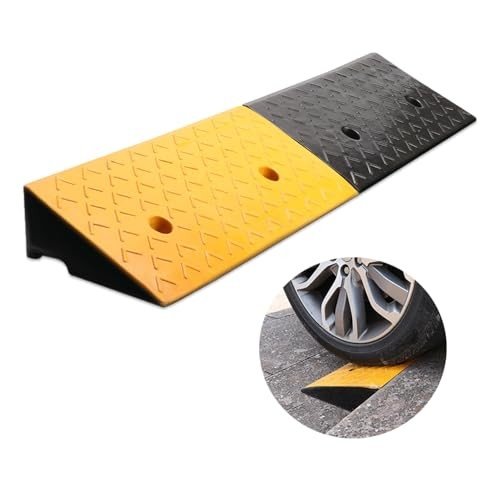
Home Wheelchair Ramps
Add a review FollowOverview
-
Sectors Non Teaching
-
Posted Jobs 0
-
Viewed 5
Company Description
The Advanced Guide To Portable Ramps For Wheelchairs
Portable Ramps for Wheelchairs: Enhancing Mobility and Independence
Mobility plays a crucial role in the lives of people with specials needs, and among the most substantial developments that promote self-reliance is the schedule of portable ramps for wheelchairs. These ramps offer a versatile service for accessing to numerous environments, permitting users to browse efficiently throughout limits, stairs, and other barriers. In this blog post, we will look into the kinds of portable ramps, their functions, and how to choose the right one for your needs. Furthermore, we’ll answer some regularly asked concerns to provide a detailed overview of this crucial mobility aid.

Kinds Of Portable Wheelchair Ramps
Portable wheelchair ramps can be found in several styles, each created for particular applications. Below is a table that outlines the primary types:

| Ramp Type | Description | Best For |
|---|---|---|
| Folding Ramps | Compact and easy to transportation; can be saved in vehicles | Daily usage and travel |
| Telescoping Ramps | Adjustable length; frequently used for various heights | Versatile for various places |
| Roll-Up Ramps | Versatile, lightweight design; perfect for uneven surfaces | Travel and outdoor activities |
| Single Fold Ramps | Easy fold style; terrific for domestic usage | Home entryways and porches |
| Multi-Fold Ramps | Several areas for extensive access; accommodates larger vehicles | Vans and trucks |
In-depth Insights on Ramp Types
-
Folding Ramps: Folding ramps are designed to fold in half or thirds, making them simple to carry. They’re frequently made from aluminum, supplying a robust and lightweight option. They’re ideal for daily tasks, such as going into a home or visiting a pal’s location.
-
Telescoping Ramps: These ramps have adjustable lengths, allowing users to personalize the height for numerous applications. They work when frequent changes are necessary, making them suitable for a wide variety of environments from homes to public buildings.
-
Roll-Up Ramps: As the name suggests, these ramps roll up into a compact shape, making them exceptionally portable. They are ideal for outdoor usage or in environments with unpredictable terrain, such as parks or irregular walkways.
-
Single Fold Ramps: This style includes a single fold, allowing for ease of set-up and stability. These ramps are great for home use– particularly for doorways or steps.
-
Multi-Fold Ramps: These ramps can manage heavy loads and are typically used to access lorries like vans and trucks. They can be unfolded to develop a long ramp for bigger loads, making them very flexible.
Key Features to Consider
When picking a portable ramp, a number of functions ought to be taken into consideration to guarantee it meets your specific needs:
1. Product
- Aluminum: Lightweight and durable, popular for numerous types.
- Plastic: Offers flexibility and deterioration resistance, perfect for outdoor settings.
2. Weight Capacity
- Ramps include various weight capacities. It’s necessary to choose a ramp that can securely support the weight of both the wheelchair and the user.
3. Length and Incline
- The length of the ramp is important for use. The slope needs to not surpass 1:12 for manual wheelchairs and 1:4 for power chairs according to ADA recommendations.
4. Mobility
- Consider how simple it is to transfer the ramp. Functions such as weight, folding ability, and whether it features a bring case are necessary.
5. Grip and Surface
- Non-slip surface products are vital for security. Look for ramps with textured surfaces or side rails for included security.
6. Storage Solutions
- Some ramps come with additional functions, such as carrying manages, and simple storage options that optimize space when not in use.
Advantages of Using Portable Wheelchair Ramps
Making use of portable wheelchair ramps extends beyond mere availability– these necessary tools provide a series of benefits:
-
Independence: Users can browse areas without help, improving their autonomy.
-
Adaptability: They can be utilized in a variety of settings, from homes and offices to outdoor environments.
-
Convenience: Ramps can be utilized at short notification, making unscripted trips simple and attainable.
-
Security: Reduces the danger of falls or mishaps when transitioning between different height levels.
Often Asked Questions (FAQs)
1. How do I select the right ramp?
When choosing a ramp, consider the height you need to get rid of, the type of wheelchair you utilize, and your environment (portable vs. long-term installation). Always inspect the weight capability and security features.
2. Can portable ramps be used outdoors?
Yes, a lot of portable ramps are designed to withstand outdoor conditions, but ensure they have non-slip surface areas and durable materials.
3. How high can a portable ramp be?
According to ADA standards, the perfect ratio is a slope of 1:12 for wheelchairs, indicating for every single inch of height, there should be at least 12 inches of ramp length.
4. Exist ramps suitable for different surfaces?
Yes, roll-up and telescoping ramps are especially efficient for unequal surfaces and surfaces, making them versatile for outside usage.
5. Will insurance coverage cover the cost of a portable ramp?
Protection for portable ramps can vary based upon individual insurance plans and scenarios. It is a good idea to consult the insurance supplier for specifics.
In summary, portable wheelchair ramps are important tools that significantly enhance My Mobility Scooters and independence for wheelchair users. By understanding the various types of ramps, essential features to consider, and the advantages they use, individuals can make educated options that match their requirements. Whether for everyday errands or outside adventures, a portable ramp can significantly improve availability and enable people to traverse their environment with self-confidence.
